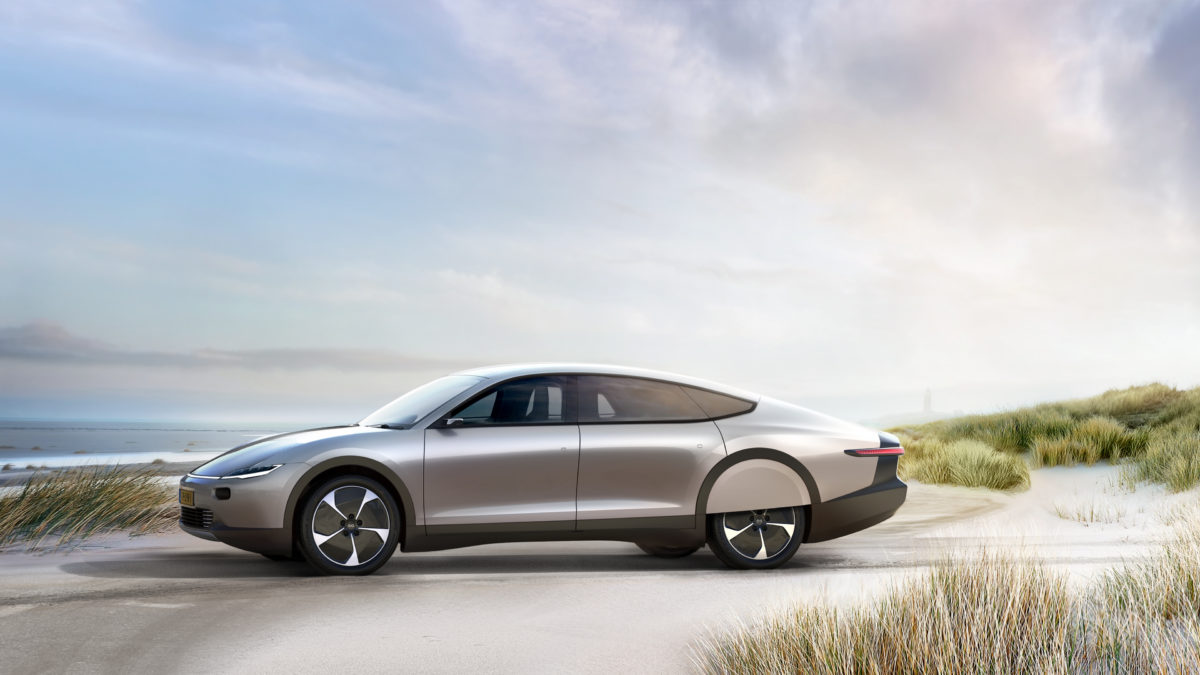Lightyear, founded by members of Solar Team Eindhoven, began their long-range journey from muck-around solar enthusiasts to solar EV innovators seven years ago, but focused their efforts considerably in the last two.
The prototype was unveiled before a select group of investors, customers, partners and press on Monday in Katwijk, the Netherlands. “This moment represents a new era of driving,” said Lex Hoefsloot, CEO and co-founder of Lightyear. “Two years of dreaming, thinking and working hard have led to this milestone, which is a giant leap towards achieving our mission of making clean mobility available to everyone.”
“We have already sold over a hundred vehicles,” said Hoefsloot. “With Lightyear One, we want to show that our technology enabled us to build one of the most sustainable cars on the market, which also offers great convenience.” However, while the Lightyear team are taking orders, commercial production is scheduled for 2021.
The Lightyear One aims to solve the top concern people have when considering EVs, the lack of range and charging options. “We are solving these issues with what we call ultra-efficiency,” said Hoefsloot. The Lightyear One’s energy consumption is so low that its relatively small battery can be charged by the sun directly. That means, in addition to its already enormous 725km of ready range, the car’s solar panels can also add 12km of range for every hour the car spends in the sun. Moreover, the Lightyear One can be plugged in anywhere, even to a regular socket.
Theoretically, on a sunny day, the Lightyear One could retain a steady 15-20km/h even once the batteries are empty. Considering the Lightyear One is charging whenever the sun hits it, according to a calculator on the Lightyear website, a Lightyear One owner in Alice Springs could get as much as 74 days of chargeless driving each year.
However, the Lightyear One does have its drawbacks. Its great range comes at the cost of performance, where it pales in comparison to its EV rivals like Tesla. For example, the Lightyear One has only two airbags, fewer than any Tesla.
Additionally, the Lightyear One won’t be running solely off solar for long. Of its 725 km range, only 65-80 of those kilometres will be powered by the sun. Otherwise the model works as a traditional EV.
Lightyear’s design is anything but traditional. The car is covered by 1.5m² of solar cells behind safety glass. Each wheel is connected to an electric motor and each motor powers the corresponding wheel. Under the hood is a battery, noticeably smaller than industry standards due to the assistance it gets from the solar panels.
Price is also a big obstacle. The Lightyear One comes in at €149,000 (AU$243,300) plus import duty, GST and luxury car taxes, additions that could add more than $90,000, if you wanted to bring the car to Australia. Because of this, the Lightyear One is not a particularly feasible purchase for most Australians, but the technological leap is a giant step for the EV market.
For an EV for which considerable expertise was developed in Australia, it could end up demonstrating a pathway for e-mobility to take in similar sunny locations. The designers claim it was partly inspired by crossing many kilometres of the Australian Outback.
Solar Team Eindhoven won the Bridgestone World Solar Challenge, the world’s most well-known solar-powered car race, in 2013, 2015 and 2017. The race, open to experimental solar-powered vehicles, crosses the Outback from Darwin to Adelaide.
Authors: Blake Matich / Tim Sylvia (pv magazine USA)
This content is protected by copyright and may not be reused. If you want to cooperate with us and would like to reuse some of our content, please contact: editors@pv-magazine.com.








By submitting this form you agree to pv magazine using your data for the purposes of publishing your comment.
Your personal data will only be disclosed or otherwise transmitted to third parties for the purposes of spam filtering or if this is necessary for technical maintenance of the website. Any other transfer to third parties will not take place unless this is justified on the basis of applicable data protection regulations or if pv magazine is legally obliged to do so.
You may revoke this consent at any time with effect for the future, in which case your personal data will be deleted immediately. Otherwise, your data will be deleted if pv magazine has processed your request or the purpose of data storage is fulfilled.
Further information on data privacy can be found in our Data Protection Policy.